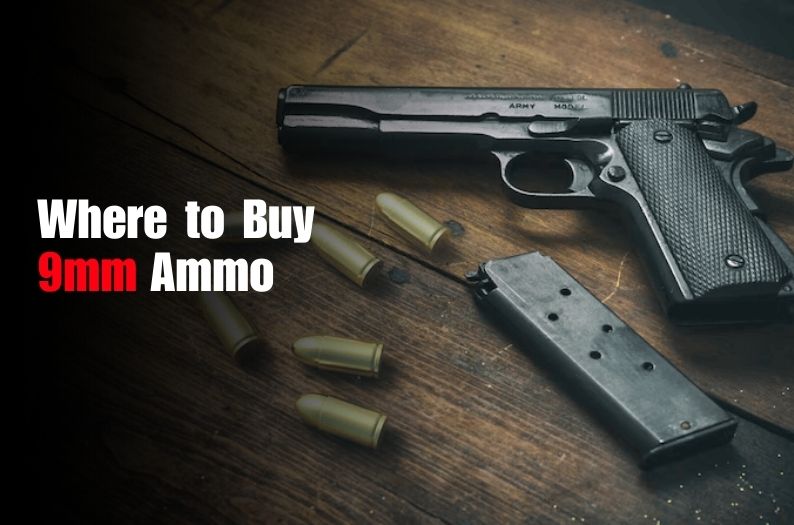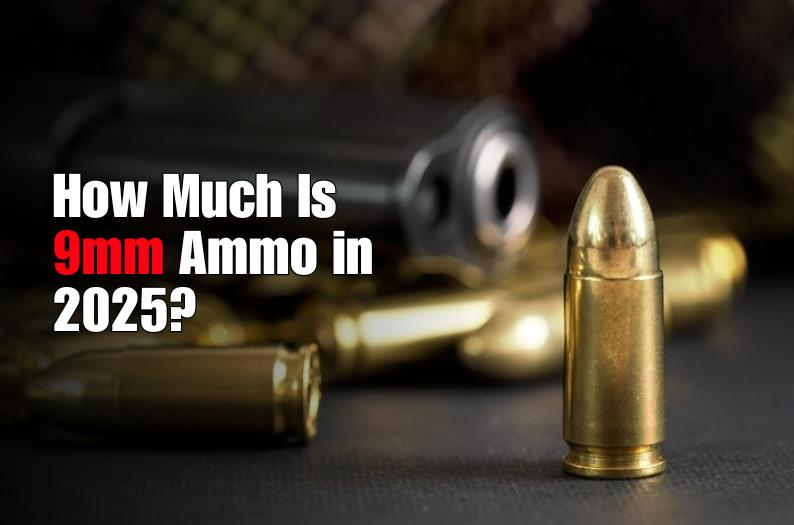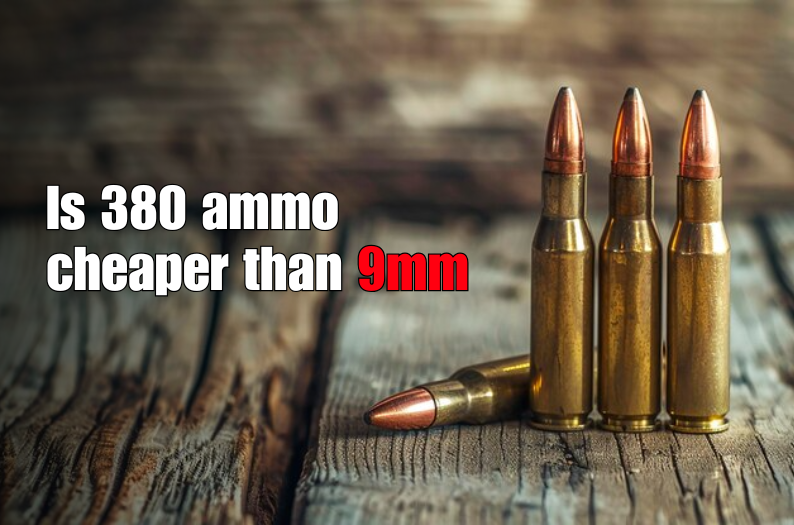Precision rimfire shooting has seen a significant rise in popularity over the past few years. This discipline, which combines the challenge of long-range shooting with the affordability of rimfire ammunition, offers both novice and experienced shooters a rewarding and cost-effective way to sharpen their skills. Whether you're looking to compete, improve your marksmanship, or simply enjoy a day at the range, precision rimfire provides a unique opportunity to engage in a highly technical and enjoyable form of shooting.
In this comprehensive guide, we’ll cover everything you need to know about precision rimfire shooting, from the basics of the sport to the equipment and techniques that will help you succeed. We'll also discuss the importance of selecting the right ammunition, with a particular focus on hollow point bullets, and how they can enhance your precision shooting experience.
1. Understanding Precision Rimfire
Precision rimfire is a shooting discipline that involves shooting rimfire rifles, typically chambered in .22 LR (Long Rifle), at various distances with a focus on accuracy and precision. The goal is to achieve tight groupings and hit small targets consistently, often at distances ranging from 50 to 200 yards or more.
a. Why Precision Rimfire?
Precision rimfire offers several advantages that make it an attractive option for shooters:
- Affordability: Rimfire ammunition, particularly .22 LR, is significantly less expensive than centerfire ammunition, making it an economical choice for high-volume shooting.
- Accessibility: Rimfire rifles are generally less expensive and have lower recoil, making them accessible to a wide range of shooters, including beginners and those with physical limitations.
- Skill Development: The principles of precision rimfire shooting, such as wind reading, trigger control, and proper shooting technique, are directly applicable to other forms of precision shooting, including long-range centerfire shooting.
b. The Evolution of Precision Rimfire
While rimfire shooting has been popular for decades, the precision aspect of the sport has gained traction in recent years, particularly with the introduction of precision rimfire competitions. Organizations such as the Precision Rifle Series (PRS) have recognized the growing interest and now host dedicated precision rimfire events. These competitions challenge shooters with various targets at different distances, often simulating real-world shooting scenarios.
2. Rimfire Rifles and Equipment
Choosing the right equipment is crucial to success in precision rimfire shooting. From the rifle itself to the optics and accessories, every component plays a role in your performance on the range.
a. Rimfire Rifles
When selecting a rimfire rifle for precision shooting, there are several factors to consider, including accuracy, reliability, and customization options.
- Popular Models: Some of the most popular rimfire rifles for precision shooting include the Ruger Precision Rimfire, CZ 457, and the Tikka T1x. These rifles are known for their accuracy, build quality, and aftermarket support.
- Customization: Precision rimfire rifles often come with the ability to customize various components, such as the stock, barrel, and trigger. These customizations can enhance accuracy and ergonomics, allowing you to tailor the rifle to your specific needs.
b. Optics
A high-quality scope is essential for precision rimfire shooting. Since targets can be small and distances vary, a scope with clear optics, precise adjustments, and a suitable magnification range is necessary.
- Magnification: While the ideal magnification depends on the specific shooting conditions, a scope with a variable magnification range, such as 4-16x or 6-24x, is commonly used in precision rimfire shooting.
- Reticles and Adjustments: Look for scopes with reticles designed for precision shooting, such as MOA or MIL reticles, which allow for precise holdovers and adjustments. Turrets with positive clicks and repeatable tracking are also important for making accurate adjustments on the fly.
c. Accessories
In addition to the rifle and optics, several accessories can enhance your precision rimfire shooting experience:
- Bipods and Rests: A stable shooting platform is crucial for accuracy. Bipods, shooting bags, and rests can provide the support needed to make precise shots.
- Ammunition: The choice of ammunition is critical in precision rimfire shooting. High-quality match-grade ammo, such as Eley Tenex or Lapua Center-X, is preferred for its consistency and accuracy. Additionally, hollow point bullets can offer enhanced performance in certain shooting scenarios, such as when expansion and energy transfer are desired.
3. Ammunition and Ballistics
Understanding the ballistics of rimfire ammunition is essential for success in precision rimfire shooting. Since rimfire cartridges, particularly .22 LR, have relatively low velocity and energy compared to centerfire cartridges, factors such as bullet drop, wind drift, and terminal ballistics play a significant role.
a. .22 LR Ballistics
The .22 LR cartridge is the most commonly used round in precision rimfire shooting. Its ballistics are characterized by:
- Low Recoil: The .22 LR's low recoil makes it easy to shoot accurately, even for extended periods.
- Bullet Drop: Due to its relatively low velocity, .22 LR experiences significant bullet drop at longer distances. Shooters must be adept at calculating and compensating for this drop, particularly beyond 100 yards.
- Wind Drift: Wind has a pronounced effect on .22 LR bullets, requiring shooters to develop strong wind-reading skills and make precise adjustments for windage.
b. Hollow Point Bullets in Rimfire
Hollow point bullets are designed to expand upon impact, increasing their terminal effectiveness. While they are commonly associated with self-defense and hunting, hollow points can also play a role in precision rimfire shooting, particularly in scenarios where maximum energy transfer is desired.
- Expansion and Energy Transfer: Hollow point bullets expand upon impact, creating a larger wound channel and transferring more energy to the target. This can be advantageous in certain precision shooting scenarios, such as varmint hunting or situations where stopping power is needed.
- Accuracy Considerations: While hollow point bullets are often slightly less aerodynamic than their full metal jacket (FMJ) counterparts, advancements in bullet design have minimized these differences, allowing hollow points to achieve impressive accuracy in precision rimfire applications.
4. Precision Rimfire Shooting Techniques
To excel in precision rimfire shooting, mastering specific techniques is essential. These techniques not only improve accuracy but also enhance consistency and confidence on the range.
a. Trigger Control
Trigger control is one of the most critical aspects of precision shooting. A smooth, controlled trigger pull minimizes the risk of disturbing the rifle's alignment with the target.
- Dry Fire Practice: Regular dry fire practice can help develop muscle memory and improve trigger control without the cost of ammunition. Many precision rimfire shooters incorporate dry fire drills into their training routine.
- Trigger Adjustments: Many precision rimfire rifles allow for trigger adjustments, such as pull weight and travel. Finding the right trigger setup can significantly enhance your shooting performance.
b. Breath Control
Proper breath control helps steady the rifle and maintain focus during the shot. Shooters often exhale slowly and pause their breath just before taking the shot, reducing movement and increasing stability.
- Consistency: Maintaining a consistent breathing pattern throughout a shooting session ensures that each shot is taken under similar conditions, contributing to tighter groupings.
c. Wind Reading
Wind is a major factor in precision rimfire shooting, particularly at longer distances. Developing the ability to read wind and make accurate windage adjustments is essential.
- Mirage and Environmental Cues: Shooters often use environmental cues, such as mirage, vegetation movement, and wind flags, to estimate wind speed and direction. Combining these observations with experience helps in making precise windage corrections.
5. Precision Rimfire Competitions
Precision rimfire competitions offer a structured environment for shooters to test their skills against challenging targets and other competitors. These events are not only a great way to improve your shooting abilities but also an opportunity to connect with the precision shooting community.
a. Competition Formats
Precision rimfire competitions come in various formats, each with its own set of rules and challenges.
- PRS Rimfire: Modeled after the Precision Rifle Series, PRS Rimfire competitions involve shooting at targets of varying distances from multiple positions. These events test a shooter’s ability to make accurate shots under pressure and adapt to different scenarios.
- NRA Smallbore: The NRA Smallbore Rifle program offers a more traditional form of rimfire competition, focusing on precision shooting from fixed positions at known distances. This format emphasizes accuracy and consistency.
- Benchrest Competitions: Benchrest shooting involves shooting from a seated position with the rifle supported on a bench. This format focuses on achieving the smallest possible groupings, often at distances of 50 or 100 yards.
b. Preparing for Competitions
Success in precision rimfire competitions requires not only skill but also thorough preparation.
- Practice Regimen: Regular practice, both live fire and dry fire, is essential for building and maintaining the skills needed for competition. Focus on areas such as positional shooting, wind reading, and accuracy drills.
- Gear Selection: Competition shooters often customize their rifles and gear to suit their specific needs. This can include selecting the right ammunition, optimizing the rifle's setup, and ensuring that all equipment is in top condition.
6. Selecting the Right Ammunition for Precision Rimfire
Choosing the right ammunition is critical for achieving the best performance in precision rimfire shooting. High-quality match-grade ammunition is preferred for its consistency and accuracy, but the specific choice of ammo may vary based on the shooting conditions and the rifle's characteristics.
a. Match-Grade Ammunition
For precision rimfire shooting, match-grade ammunition is the gold standard. These cartridges are manufactured with tighter tolerances, ensuring consistent performance in terms of velocity, accuracy, and overall reliability. Some of the most respected brands in this category include:
- Eley Tenex: Known for its unparalleled accuracy, Eley Tenex is often the choice of competitive shooters. Its consistent performance is ideal for achieving tight groupings at long distances.
- Lapua Center-X: Lapua’s Center-X is another top contender in the match-grade category. It’s highly regarded for its reliability and precision, making it a popular choice for both competition and practice.
- SK Rifle Match: SK’s Rifle Match ammo is a more affordable option that still offers excellent performance. It’s a great choice for shooters who want to practice without breaking the bank, while still maintaining a high level of accuracy.
b. Testing and Tuning
Even with high-quality match-grade ammunition, it’s essential to test and tune your rifle with different ammo brands to find the one that performs best with your specific setup. Every rifle has its own preferences, and a small change in ammunition can significantly impact accuracy.
- Lot Testing: Once you’ve identified a brand of ammunition that works well with your rifle, consider purchasing multiple lots of that ammo and testing each one. Minor variations between lots can affect performance, and finding the best lot can give you a competitive edge.
- Barrel Tuning: Some precision rimfire shooters use barrel tuners to fine-tune the harmonics of their rifle. This device allows for adjustments that can reduce group sizes and optimize accuracy with specific ammunition.
7. The Role of Hollow Point Bullets in Precision Rimfire
Hollow point bullets are typically associated with self-defense and hunting due to their expansion properties. However, they also have a role in precision rimfire shooting, especially in scenarios where terminal performance is as important as accuracy.
a. Hollow Point Design and Expansion
Hollow point bullets are designed with a hollowed-out cavity in the nose. Upon impact, this cavity allows the bullet to expand, creating a larger wound channel and transferring more energy to the target. This expansion is particularly useful in hunting applications, where stopping power is crucial.
- Varmint Hunting: In precision rimfire shooting, hollow point bullets are often used for varmint hunting. The expansion ensures quick and humane kills, even with the relatively low energy of rimfire cartridges like the .22 LR.
- Reduced Over-Penetration: Another advantage of hollow points in precision shooting is the reduced risk of over-penetration. This makes them a safer choice in environments where minimizing the risk of collateral damage is important.
b. Accuracy of Hollow Points
While some shooters assume that hollow point bullets are less accurate than full metal jacket (FMJ) rounds, this is not always the case. Advances in bullet design have led to hollow points that are just as accurate as their FMJ counterparts, if not more so, in some cases.
- Precision Engineering: Premium hollow point bullets, such as those produced by Eley and Lapua, are engineered to strict standards, ensuring that they deliver consistent accuracy. For shooters who need both precision and stopping power, hollow points can be an excellent choice.
- Match-Grade Hollow Points: Some manufacturers offer match-grade hollow point ammunition specifically designed for precision shooting. These bullets combine the best of both worlds—expansion and accuracy.
8. Advanced Techniques for Precision Rimfire
As you advance in precision rimfire shooting, developing more sophisticated techniques can further enhance your performance. These techniques go beyond the basics and delve into the finer points of precision shooting.
a. Positional Shooting
Precision rimfire competitions often require shooting from various positions, including prone, kneeling, and standing. Mastering positional shooting is crucial for maintaining accuracy across different scenarios.
- Prone Position: The prone position offers the most stability, making it ideal for long-range shots. Focus on creating a solid foundation with your elbows and ensuring that your body is aligned with the rifle.
- Kneeling and Standing: These positions are less stable than prone but are often required in competitions. Practice transitioning between positions smoothly and maintaining control of your rifle while adjusting your body.
b. Environmental Factors
Environmental factors such as wind, temperature, and humidity can significantly impact bullet trajectory. Understanding how these factors affect your shots and making the necessary adjustments is key to precision shooting.
- Wind Reading: Wind can cause bullet drift, especially with light rimfire bullets. Learning to read wind speed and direction is essential. Use environmental cues and mirage to estimate wind, and adjust your scope’s windage accordingly.
- Temperature and Humidity: Both temperature and humidity can affect bullet velocity and trajectory. In hotter temperatures, bullets may travel faster, while high humidity can increase drag. Be prepared to adjust your aim based on these conditions.
c. Mental Focus and Consistency
Precision shooting is as much a mental game as it is a physical one. Developing mental focus and maintaining consistency throughout a shooting session are critical to success.
- Routine and Discipline: Establishing a consistent routine before each shot can help maintain focus. This routine might include checking your scope settings, controlling your breathing, and visualizing the shot.
- Dealing with Pressure: In competition, the pressure to perform can be intense. Developing strategies to manage stress, such as deep breathing or positive visualization, can help keep your nerves in check.
9. Getting Started in Precision Rimfire
For those new to precision rimfire shooting, getting started may seem daunting. However, with the right approach and mindset, you can quickly progress and enjoy the many benefits this sport has to offer.
a. Building a Solid Foundation
Start by focusing on the fundamentals: rifle setup, optics, ammunition, and shooting techniques. Invest time in understanding each component and how they work together to achieve precision.
- Beginner-Friendly Rifles: Consider starting with a rifle that offers a good balance between performance and affordability. The Ruger Precision Rimfire and CZ 457 are excellent choices for beginners looking to enter the precision rimfire world.
- Basic Optics: While high-end optics can provide an edge, beginners can start with a more budget-friendly scope and upgrade as they progress. Look for a scope with clear glass, reliable adjustments, and a suitable magnification range.
b. Joining a Community
One of the best ways to accelerate your learning is to join a precision rimfire shooting community. Whether it’s a local club, an online forum, or a competition league, being part of a community allows you to share knowledge, ask questions, and gain valuable insights from more experienced shooters.
- Local Clubs and Matches: Many shooting ranges host regular rimfire matches, which are a great way to get involved in the community and learn from others. These matches often cater to all skill levels, making them accessible to beginners.
- Online Resources: Websites, forums, and social media groups dedicated to precision rimfire shooting can also be valuable resources. They provide a platform to ask questions, share experiences, and stay updated on the latest trends and techniques.
10. Conclusion
Precision rimfire shooting is a rewarding and challenging discipline that offers something for shooters of all levels. Whether you’re a beginner looking to hone your skills or an experienced shooter seeking to push the boundaries of accuracy, precision rimfire provides the tools and opportunities to achieve your goals.
As you continue to explore the world of precision rimfire, remember that the choice of ammunition plays a crucial role in your success. Hollow point bullets, with their balance of accuracy and terminal performance, are an excellent option for various precision shooting scenarios. Their ability to expand upon impact and deliver consistent results makes them a valuable addition to any shooter’s arsenal.
Ready to take your precision rimfire shooting to the next level? Explore our selection of premium hollow point ammunition designed to deliver unparalleled accuracy and performance. Visit our website today to find the perfect ammo for your next competition or range session!
- #.22 LR precision shooting
- #advanced rimfire shooting
- #best rimfire ammunition
- #best rimfire rifles
- #Eley Tenex for precision
- #hollow point bullets in rimfire
- #hollow point expansion
- #hollow point rimfire ammo
- #match-grade rimfire ammo
- #positional shooting rimfire
- #precision rimfire competitions
- #precision rimfire guide
- #precision rimfire optics
- #precision rimfire shooting
- #rimfire accuracy tips
- #rimfire ballistics
- #rimfire rifle customization
- #rimfire shooting community
- #rimfire shooting techniques
- #wind reading for rimfire










